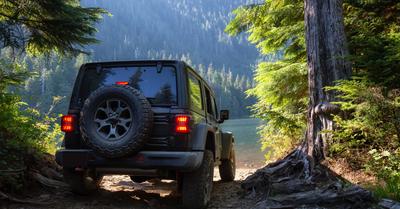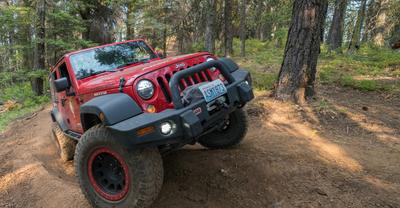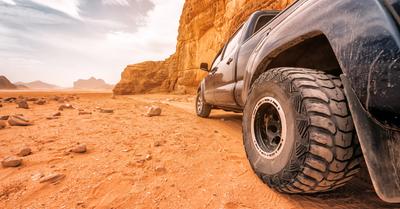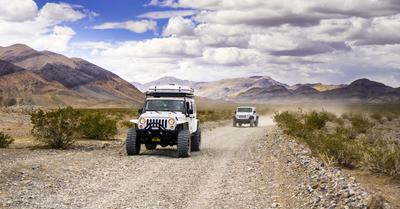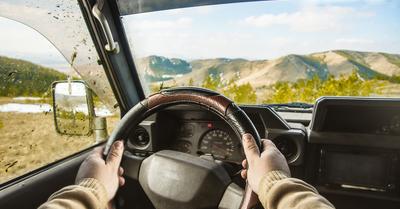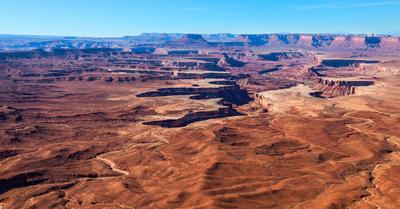We know that there are certain vehicles built for off-roading, but what are the laws pertaining to this? Can you off-road anywhere?
Driving off-road is thrilling, and it's something that adventure seekers live for. However, there are certain risks associated with it and laws that you need to follow before you decide to go off-roading. This also begs the question of where you can go off-road in the United States.
It is not illegal to drive off-road in the US; so theoretically, you can off-road pretty much anywhere. However, each state has its own specific laws that need to be followed, or else you could face hefty fines and possibly even jail time.
With that in mind, here, we will look at the different laws pertaining to off-roading in the United States. This also includes property laws that could stop you from off-roading in a particular place and the equipment you need to ensure that you're doing everything you can to safeguard yourself both physically and legally.
As off-roading enthusiasts with years of experience, we can provide you with all the information you need on off-roading in the US - so you can enjoy the thrill without upsetting Uncle Sam.
This article may contain affiliate links where we earn a commission from qualifying purchases.
Off-Roading in the US
Off-roading is enjoyable, but one of the first issues people inquire about is if it is legal. This is crucial information, so we set out to find the answer.
This question has a clear answer: no. Driving a car off-road is not in and of itself criminal. If you drove through your own land, for example, you would be engaging in legal off-roading. However, that said, in other circumstances, it may be prohibited, resulting in citations or other legal penalties.
Off-roading is prohibited on state and federally owned territory, for starters. You may be able to drive or ride an ATV on this terrain under some circumstances. When it comes to land belonging to the state or federal government, it is advised to never go off-roading without first acquiring permission verbally or in writing from the property owner or after seeing posted signs.
Off-roading may be permitted on certain routes or parts in these places, so stick to them to avoid penalties and tickets. Secondly, there are regulations against reckless driving. While off-roading does not always imply reckless driving, it might result in a penalty for reckless driving. This is especially true if you're driving through a creek, damp grass, or other potentially hazardous locations.
It's also possible that driving without sufficient protection or driving too quickly is prohibited. This is why it's critical to maintain a high level of safety even while off-roading lawfully. To avoid any issues in this region, make sure to take the necessary safeguards.
Off-roading is frequently done on private property. This works well if the landowner agrees, but never enter someone's property without first requesting permission. If you don't, you might face a trespassing fee or possible arrest.
Although off-roading is not considered illegal in and of itself, you should always call ahead or look it up online before heading out on the route. It will just take a few minutes and save you both time and money.
Vehicle Compliance
When going off-roading, you often have the option of using an ATV or another vehicle. ATVs are a terrific alternative for off-roading, but your average vehicle may not be up to the task.
You probably wouldn't do this in your family car, but other cars are better suited to rough driving. Before embarking on a challenging path, be sure that your vehicle can manage it.
Aside from being safe, certain off-road modifications are also banned. Suspension lifts and tire sizes must comply with the law, or you risk receiving a fine. Other tires are illegally large, and some lifts are too tall.
Because these laws vary by state, double-check your local regulations before making any changes.
When venturing off-road, 4WD vehicles are required. If your vehicle isn't equipped to handle the weather, you'll quickly get trapped with no way out. Driving in a car with low-range transfer cases is also a good idea.
When climbing a rocky slope or ledge, a low range is preferable. In a circumstance where low–end power is required, this option allows you to operate the vehicle. It's also useful for descending or ascending difficult terrain. This isn't necessary, but it will be helpful.
Required Skills
Driving off-road requires different skills than driving in traffic, and waiting in traffic doesn't help either. You must be able to maintain complete control of your vehicle in a wide range of challenging, continuously changing situations, and you must be prepared to retrieve a vehicle that has become stuck, rolled, or otherwise immobilized.
Vehicle recovery is a separate issue that may be just as damaging to people as it is to your paint.Practice is the only way to gain the essential abilities. The easiest way to get started is to buy a cheap, older 4x4 and take it out for a spin in a supervised environment in the presence of experienced drivers. Taking your brand-new Jeep Wrangler on a trail is a formula for a very stressful and expensive weekend.
Grand Canyon - Arizona
One of the Seven Natural Wonders of the World, the Grand Canyon is certainly America's geological masterpiece. The Bureau of Land Management manages most of the surrounding parkland, which is available for off-road activities.
This is a perfect site for individuals who can't bring their own car or want to experience off-roading for the first time, as there are a variety of guided excursions available across the region.
Oceano Dunes - California
If driving over sand dunes is your jam, then why not try Oceano Dunes in California. This 3,600-acre stretch of sand on California's central coast, once known as Pismo Beach, is a rare find.
Nearly half of the land is available for off-road riding, and there is no other place in the state where you can drive straight out onto the dunes, choose your perfect camping area, and spend your time having exciting rides through the dunes.
Conservationists, scientists, the public, and other groups regard the region as the best and most extensive coastal dunes in the state. While you may visit the entire region in a single day of riding, additional activities such as swimming, surfing, horseback riding, and fishing, are also available.
Pinnacle Creek - West Virginia
If the routes aren't enough to get your adrenaline pumping, the fact that you'll be driving through some Civil War-era battlefields just like troops did (okay, maybe not driving) in the mid-nineteenth century will. Try the Little Coal River Trails in Danville and Madison if you're new to off-roading.
The Pinnacle Creek West Virginia Trail System near Pineville caters to a wide range of riders and is noted for its breathtaking scenery and proximity to world-class whitewater rafting.
Bald Eagle State Forest - Pennsylvania
The Bald Eagle State Forest, which spans approximately 200,000 acres across several counties in Pennsylvania, is a genuine gem in the outdoor recreation world. It stretches across high, rocky ridges and includes miles of pristine mountain streams and extensive sections of old-growth forest.
You also get to enjoy miles and miles of four-wheel-drive routes, dual-sport motorcycle tracks, and ATV and non-street legal motorbike trails. Dual sport motorcyclists particularly enjoy the state's greatest network of single-track and gravel roads, which may take days to explore.
Fly-fishing enthusiasts can visit the famed Penns Creek as well as White Deer Creek, while paddlers may discover water pathways for canoes and kayaks.
Moab and Paiute ATV Trail - Utah
Moab is surrounded by many acres of off-road pleasure, ranging from peaceful old mining roads to rock-crawling thrills, making it the most OHV-friendly town in the country. The slickrock is the main attraction here, with waves of sticky rock that appear to be made for off-road vehicles. You'll witness arches and petroglyphs if you ride Poison Spider Mesa, which is a mix of dirt and rock.
In south-central Utah, the Paiute has about 2,000 miles of pathways that go through Fishlake National Forest and BLM territory. The Paiute is centered on a 275-mile circle that goes through small communities, but it also has access to a plethora of side routes that lead deep into Utah's backcountry. From solid, packed roads to nasty slopes on tiny paths, you can expect everything.


